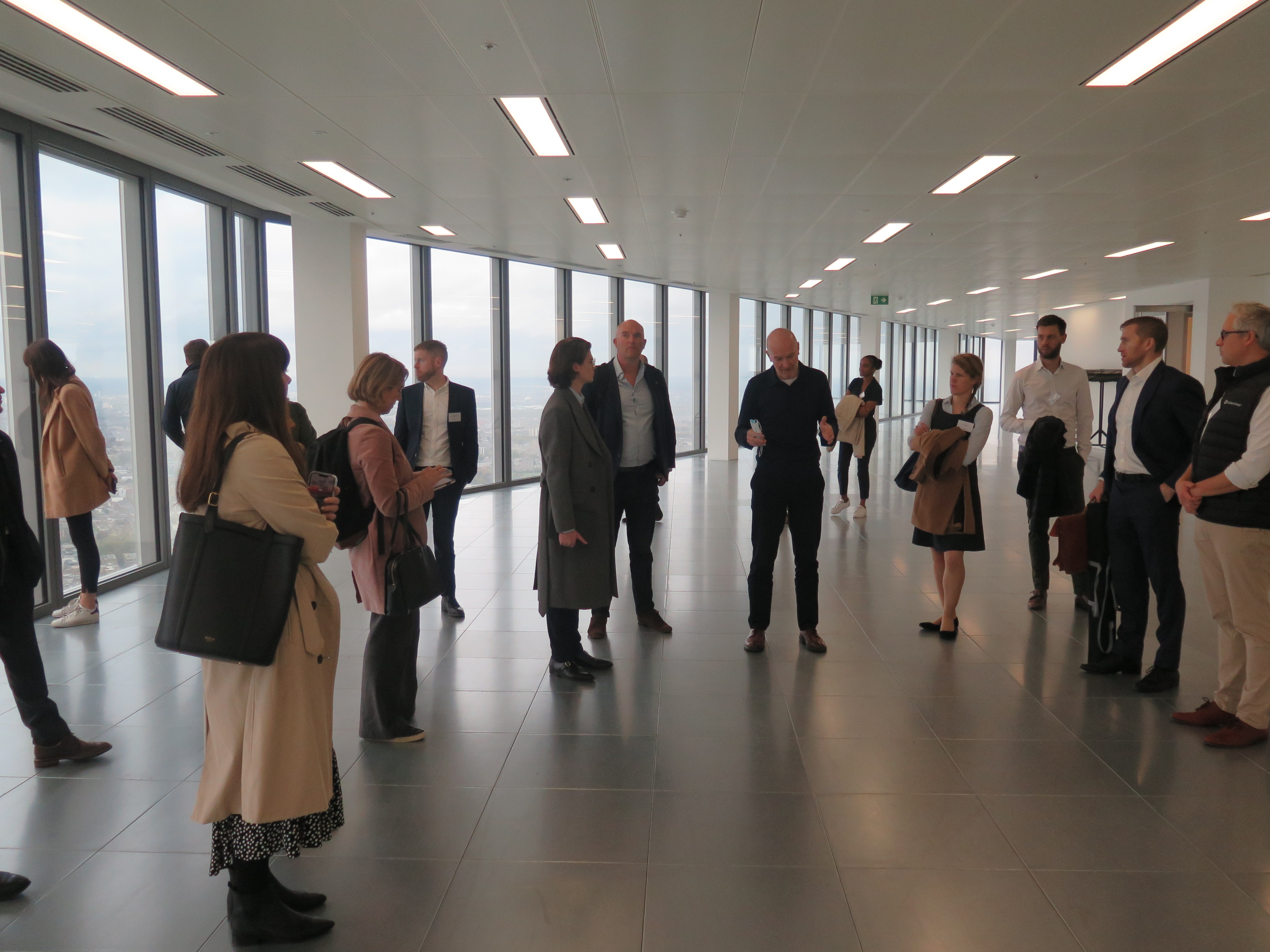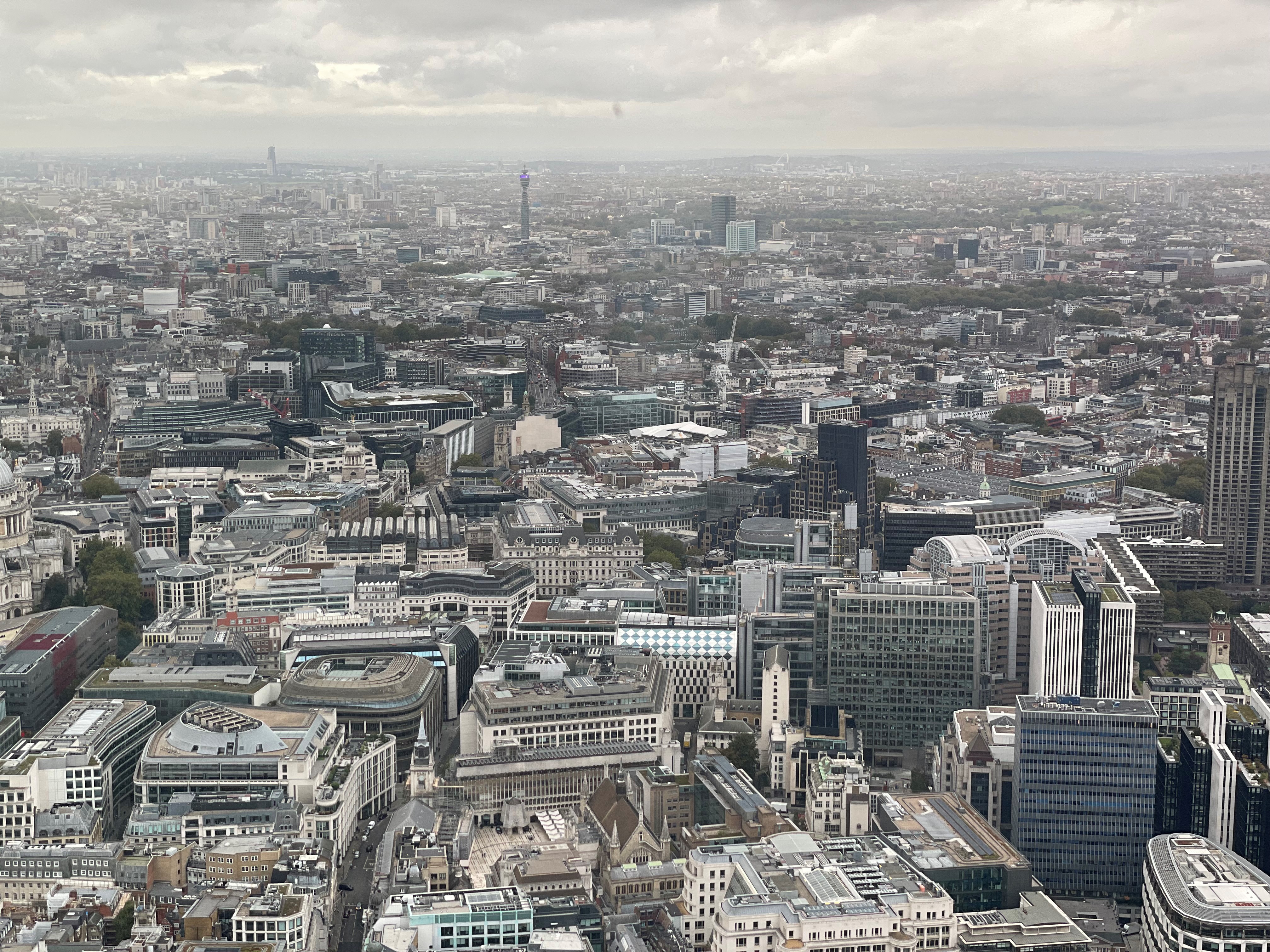Offices 2025: What does the future hold?
And Site Visit, 22 Bishopsgate, London EC2
Office demand remains in flux
Although the effects of the pandemic are receding, office occupiers are continuing to take a relatively short-term view of their space requirements, according to Dan Brown of Situu, a flex space advisory business.
Speaking at the first SPR seminar to be held face-to-face since the onset of the pandemic, he proposed that office occupiers are still in the process of deciding how their working practices will settle in the longer-term and what precise form of ‘hybrid’ working model they will adopt.
In a poll of a full – albeit socially distanced – room in AXA IM’s iconic new skyscraper, 22 Bishopsgate, most attendees indicated that they would expect to be working 2-3 days a week in the office once the pandemic is permanently mitigated.
Bill Page of L&G Real Assets agreed with Brown that it is difficult to second guess the future, but he stressed that there is clearly an emerging polarisation between the best and the worst offices in terms of both leasing conditions and valuations. This was a theme evident in much of the discussion. He also noted that space previously considered ‘average’ was at increasing leasing risk.
James Goldsmith of AXA IM was bullish about the state of the prime London office market, which he said had revived much quicker than expected. He did however acknowledge that, on a like-for-like basis, between 10-25% less space was being targeted by individual occupiers in the medium term, although people were likely ‘to do more with it’, for instance with greater flexibility and less assigned seating.
These largely positive sentiments were echoed by Elaine Rossall of JLL, who noted that office take-up in Q3 had been surprisingly strong and that the return of prelets reflected market confidence. This recovery had been seen not just in London but also regionally, with tech firms proving to be a particularly strong source of demand in the capital.
Another theme that emerged from the discussion, which was moderated by Tom Duncan of Cromwell Property Group, was that occupier desire for more flexible space and a higher level of amenity within offices seems to be resulting in more management agreements with landlords rather than a greater direct leases to specialist flex office providers. Page suggested that this partly flowed from owners’ growing experience of working with ‘alternative’ property types, such as living, which often involved a greater operational element.
There was also much discussion about what the idea of ‘quality’ means to occupiers. All agreed that sustainability is a major part of this, with rising EPC requirements meaning that more and more buildings will facing the risk of ‘stranding’. Rossall highlighted that JLL are themselves targeting net zero carbon emissions from their own office footprint by 2030, but Page suggested there are big challenges to achieving this from supply chain issues and the planning process.
After the seminar, the AXA IM team led attendees on a tour of 22 Bishopsgate, its 62 storeys making it the tallest building in the City of London at 278 metres. The tour encompassed the second floor, ‘The Market’, where the majority of space is devoted to a restaurant and terraced bar with pop-up food stalls aiming to provide healthy dishes with a sustainable provenance. Attendees were also taken behind the scenes to the management suite where JLL ensure the building operates to the highest standards and that its amenities are optimised.
Then followed the literal highlight of the tour as we were whisked up to the viewing gallery on the 58th floor. This provided spectacular views of London and the distant countryside beyond. Goldsmith explained that each level has a floorplate of around 25,000 square feet and that most have so far been let in one to three-floor packages – around two-thirds of the building has now been let with limited need for any subdivision. Legal firms have so far been the most prominent takers of space.




Tim Horsey